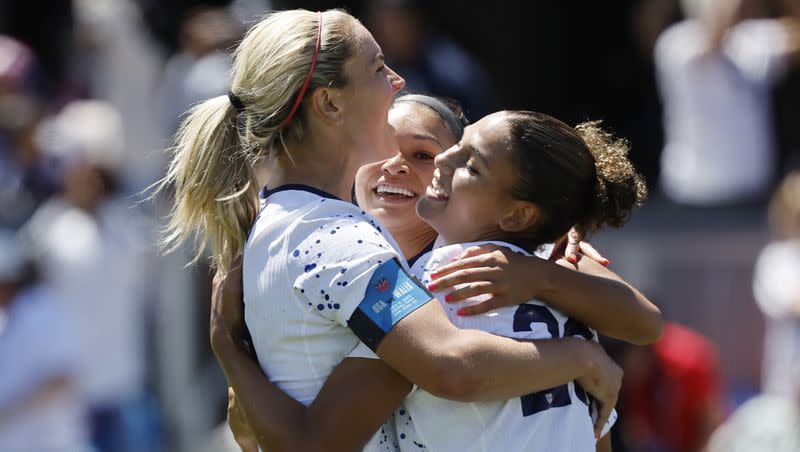How the 2023 FIFA World Cup will be different

The FIFA Women’s World Cup starts Thursday in Australia and New Zealand. The tournament will still showcase some of the best players in the world, but it will be a little different this year.
In an attempt to answer the growing global demand for women’s soccer and the calls for equality from players and fans, FIFA is making a few changes to the World Cup and implementing components that are already common in the men’s tournament.
What’s different this year? Here are three changes you should know about:
FIFA expanded the number of teams
In 2019, FIFA announced that the 2023 World Cup would expand from 24 teams to 32. The last time the tournament expanded was in 2015 when it went from 16 to 24 teams, according to Yahoo Sports.
Through the expansion, eight teams will be making their World Cup debuts: Haiti, Republic of Ireland, Morocco, Panama, Philippines, Portugal, Vietnam and Zambia, according to FIFA. Both Vietnam and Portugal are in the same group as the U.S.
The men’s World Cup has included 32 teams since 1998 and will expand to 48 teams in 2026 when the U.S., Canada and Mexico co-host the tournament.
FIFA increased prize money amount
Not only is the size of the World Cup growing, so is the prize money. The total prize money will increase from $30 million to $110 million, ESPN reported.
For the first time, some of the prize money will go directly to the players. Typically, the money goes to the participating countries.
But this time, each player on a World Cup roster will receive $30,000, and that amount will increase as teams advance through each round. Each player on the winning team will be awarded $270,000.
“The global salary of women’s professional footballers is approximately $14,000 annually so the amounts allocated under this unprecedented new distribution model will have a real and meaningful impact on the lives and careers of these players,” FIFA President Gianni Infantino said, according to CBS Sports.
All of the participating countries will receive at least $1.56 million to “reinvest back into football in their countries” and “help to propel the women’s game even further” as Infantino said. The winning team will earn $4.29 million.
The increase to $110 million is still a stark contrast to the $440 million that was split between the mens’ teams in 2022. Infantino is targeting equal prize money for the 2026 men’s and 2027 women’s World Cups, ESPN reported.
FIFA implemented team base camps
This year, each nation will have their own base camp for the first time. The base camps will be a team’s “home away from home,” including training sites and hotels, according to FIFA.
The U.S. will be based in Auckland and will play all of its group stage matches in New Zealand. In January, the U.S. traveled to Auckland to play New Zealand and to familiarize players with the area they’d be staying in and the facilities they’d be using during the World Cup.
In addition to the base camps, teams will stay in venue specific hotels and practice on venue specific training sites the day before matches for each of the 10 venues.

